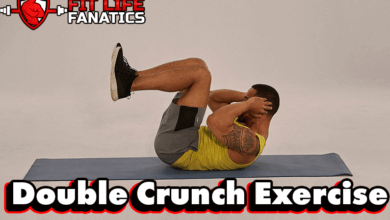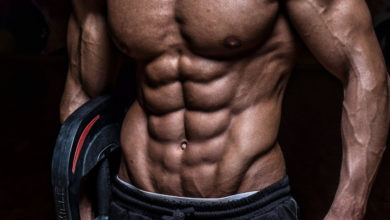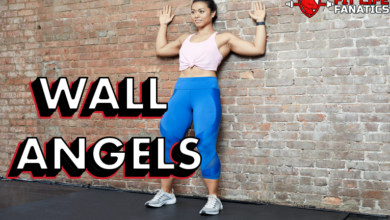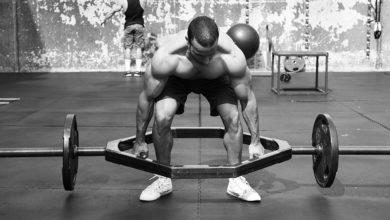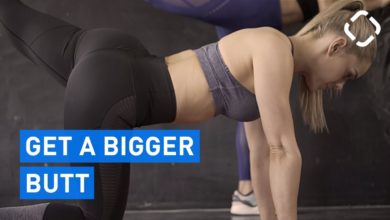3 Highly Effective Russian Twist Alternatives – Top Substitute Exercises

Functional fitness is about training your body with exercises that have a real-world application. That's why Russian twists are so popular. This is an exercise that you perform in the transverse plane, which is the plane of motion that your body moves in when you turn from side to side.
In other words, when you twist. Now make a list of all the workouts you perform in the gym on a regular basis. A bulk of them are in the sagittal plane, while some are in the frontal plane. Talk of leg raises and captain's chair workouts, cable crunches, ring rows and its alternatives... The transverse plane? Not many.
The Russian Twist is one of the best exercises for this entire group of muscles, which have a critical role to play in aesthetics as well as overall fitness. But, what if you cannot perform this exercise? What are the best Russian twist alternative exercises?
Today, we will explore some other great alternatives to Russian twists that will help you build functional strength and stability.
What is the Russian Twist Exercise?
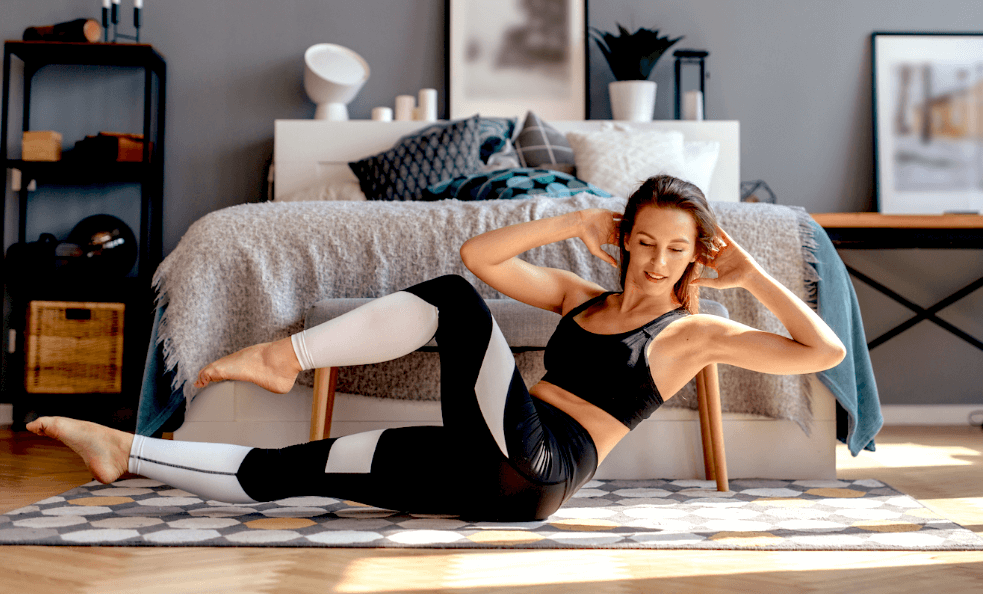
The Russian Twist is a bodyweight exercise that primarily targets the abs and obliques. It is performed in the transverse plane, meaning you twist your torso from side to side by sitting on the ground.
The idea is to keep your back straight and to use your abs to twist your torso. You can either hold your hands together in front of you or keep them at your sides.
There's some speculation that this exercise was developed in Russia to help soldiers train during the World War. But there are variations of this exercise, such as the Mason twist which uses a weight plate, that date back to the early 1900s.
Another exercise that comes quite close to resembling the russian twist is the side crunches, but this is an advanced one and I would recommend doing it once you have figured out you can do quite a significant number of crunches a day without really feeling it, or you just want to hit a different group of muscles.
How to perform the Russian Twist
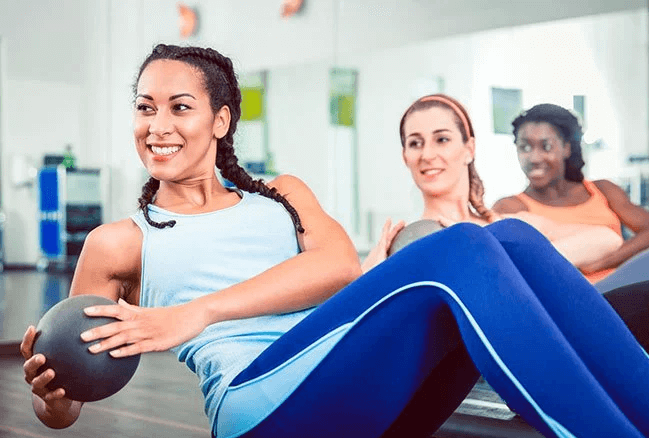
The Russian Twist as such is a simple exercise. To perform it, you need to:
- Step 1 - Sit on the ground with your knees bent and pull your abs in.
- Step 2 - Hold your hands together in front of you or keep them at your sides.
- Step 3 - Lean back a little while keeping your back straight.
- Step 4 - Twist your torso to the right and then to the left.
Repeat this until fatigue sets in, or until your predetermined rep range.
Top 3 Alternatives to Russian Twists
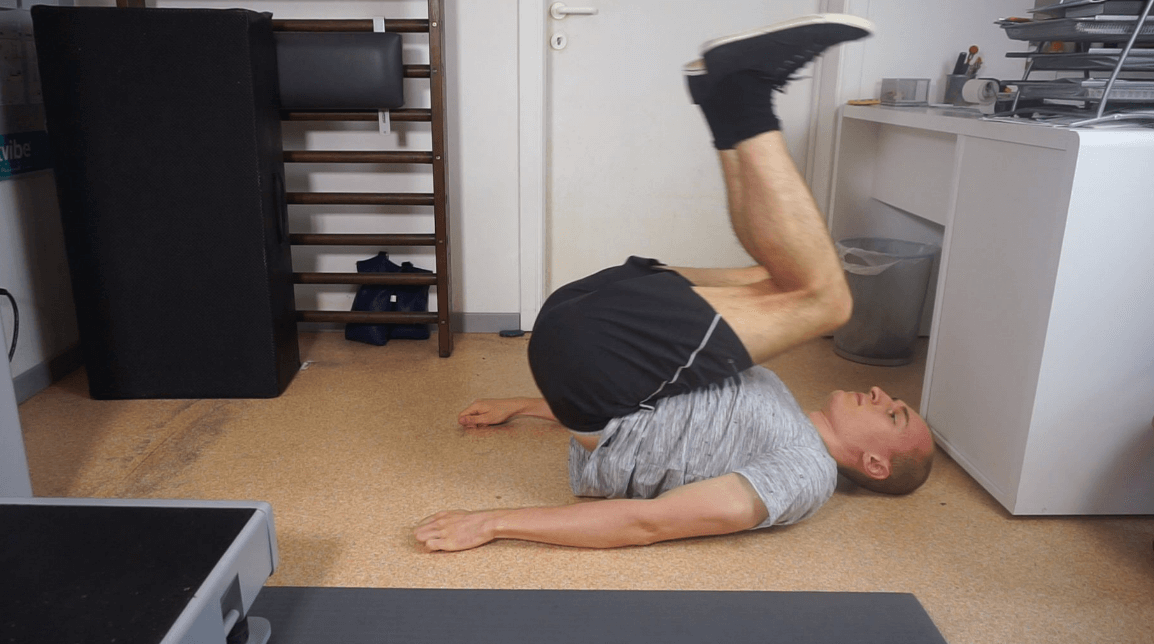
To understand why we chose these alternatives, you need to know the muscles that the Russian Twist targets. So, what muscles do Russian twists work?
The Russian Twist primarily targets the rectus abdominis & transverse abdominis (want 10-pack abs? hit these two), oblique muscles and hip flexors. There's also the latismus dorsi and the rhomboid muscles that come into play. But not to the same extent as the first four muscles.
Now that you know which muscles this exercise targets, let's look at some alternative exercises that work these same muscles.
#1 - Windshield Wipers - My personal favorite
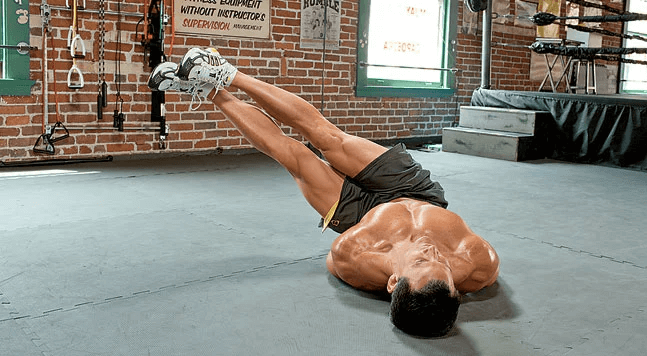
The biggest advantage of Russian Twists is its ability to isolate the oblique without placing strain on your lower back. That's exactly why Windshield Wipers make for the perfect alternative.
Windshield wipers are a more advanced exercise that works the same muscles as the Russian Twist. Well, almost the same. In fact, these will recruit more muscles in your core, including the erector spinae and the hip flexor muscles.
How to perform Windshield Wipers
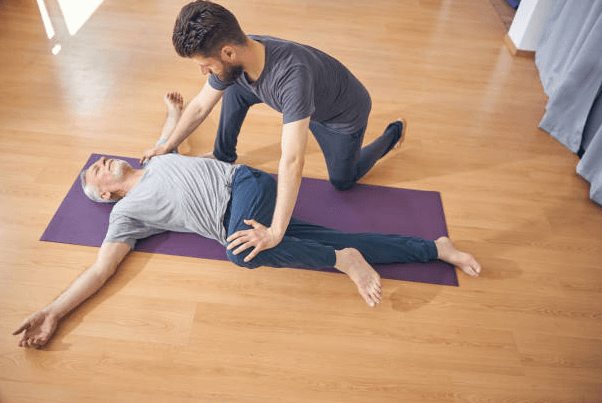
Step 1 - Lie on your side with your legs straight and your head and shoulders resting on your hand.
Step 2 - Place your top arm across your chest and use your bottom arm to brace your body. Advanced athletes can place both arms on the chest.
Step 3 - Use your abs to lift your legs up and over to the other side. Think of it like a wiper wiping a windshield. That's the motion that you must mimic with your legs.
Step 4 - Your glutes and legs should now be parallel to the ground at the lowest point. Pause for a second and then repeat the motion to the other side.
Pro Tip - While performing this exercise, make sure that you keep your head and shoulders off the ground. This will help to activate more muscles in your core.
Muscles worked with Windshield Wipers
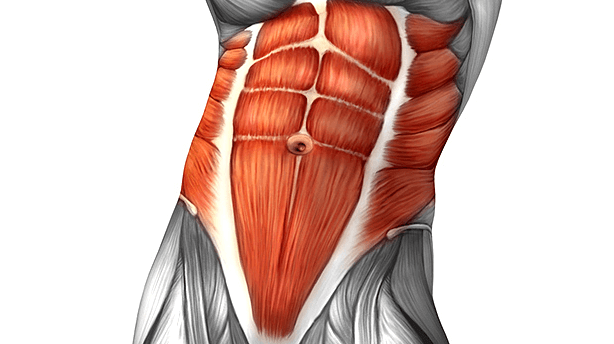
Windshield Wipers are a balance, stability and strength demanding exercise, all bundled into one. It will test your core like no other exercise can. This is primarily because of the rotational component, which targets the oblique muscles. But it also works the rectus abdominis, hip flexors and erector spinae muscles.
Here's a look at the muscles it hits.
Rectus abdominis
The largest of the four abdominal muscles, the rectus abdominis runs vertically along your sides and helps with both trunk flexion and stabilization.
Transverse abdominis
The deepest of all abdominal muscles, the transverse abdominis wraps around your sides and provides support for your spine.
Oblique muscles
There are three oblique muscles on each side of your torso - the internal, external and transverse obliques. These muscles help with rotation and flexion of your trunk.
Glutes
Didn't think it would hit your glutes, did you? Well, it does. The glutes are the largest muscles in your body and are responsible for hip extension, among other functions. The constant rotational movement recruit your glutes to a great extent.
Windshield wipers, therefore, are one of the most challenging core exercises you could do. If done correctly, it will help you develop strength and stability in your core.
Suggested Reps - Each one has their own sweet spot. Start with 5-10 per side and work your way up.
#2 - Pilates Scissor
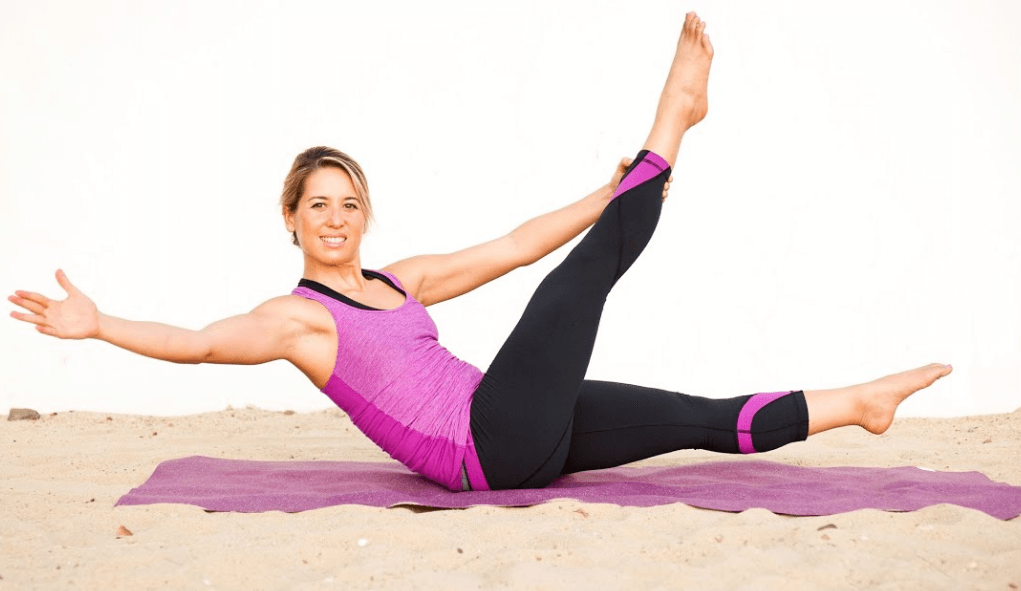
The Pilates Scissor is a great alternative to Russian Twists, if you're looking for something a little less intense. It still targets the same muscles, but in a much more comfortable way.
Well, don't let that fool you. By the time you are done with two sets of this, you'll be yearning to go back to Russian Twists again.
How to do Pilates Scissor
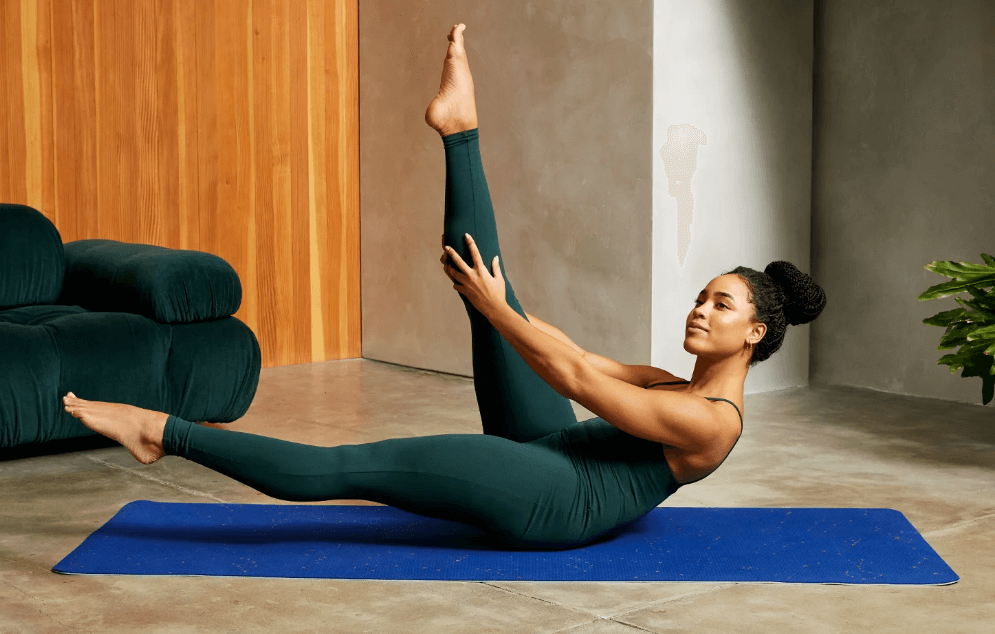
Step 1 - Lie on your back with both legs in the air at a 45-degree angle and your head and shoulders off the ground. Your legs should be together and straight.
Step 2 - Brace your core. Use your abs to slowly lower one leg towards the floor, while keeping the other leg at the same angle.
Step 3 - Once your leg is an inch or two from the floor, pause for a second and then return to the starting position.
Step 4 - Repeat with the other leg. That's one rep. Do as many as you can without losing form.
Pro Tip - Form is crucial with this exercise. Make sure to keep your head and shoulders off the ground at all times. This will help you engage more muscles in your core. Always brace your core before lowering your legs. You cannot slouch your core muscles at any point during the exercise. That's an indication that its time to stop.
Muscles worked with Pilates Scissor
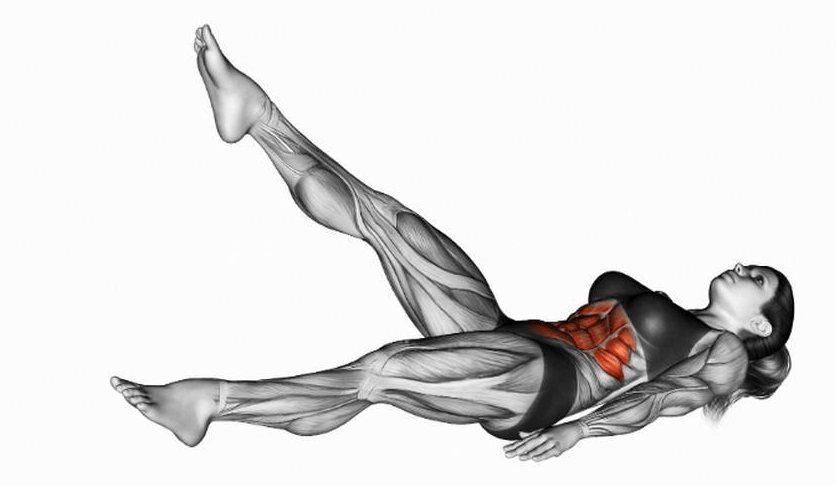
Pilates Scissor is a dynamic exercise that recruits your lower abs, the oblique muscles and the hip flexor.
Here's a look at the muscles it targets.
Lower abs
What's commonly called 'Lower abs' is in fact the lower part of your rectus abdominis muscle. This is the muscle that gives you that 'six-pack' look. Isolating this muscle is not an easy task, but Pilates Scissor comes pretty close. If you want to make it even more challenging, grab some plates as you perform the exercise.
Oblique
The Pilates Scissor with its alternating legs movement is a great way to work your obliques as well. Make sure you keep your abs pulled in and don't let your hips sag as you move.
Hip Flexor
The Hip Flexor is a group of muscles that helps you lift your knee toward your body. This includes the iliopsoas, rectus femoris, sartorius and tensor fasciae latae. A strong Hip Flexor will make sure other muscles in your legs, including your quads and hamstrings, work more efficiently. The Pilates Scissor is a great way to stretch and strengthen your Hip Flexors.
Suggested Reps - The ideal rep range for the Pilates Scissor will depend a lot on your existing conditioning, lower back strength and mobility. For most people, 8-12 reps per side is a good place to start. If you're finding it really easy, go ahead and increase the reps to 25.
#3 - High to Low Cable Wood Chops
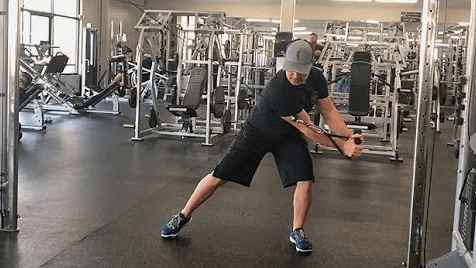
The High to Low Cable Wood Chop is a great way to work your entire core, including the obliques, in a very functional way. It is an underrated cable exercise that not a lot of people overlook as they focus on other cable workouts like lat pulldown or seated row for instance.
But it's a great alternative to Russian Twists and works all the muscles in your core, including the ever-important obliques.
How to do High to Low Cable Wood Chops
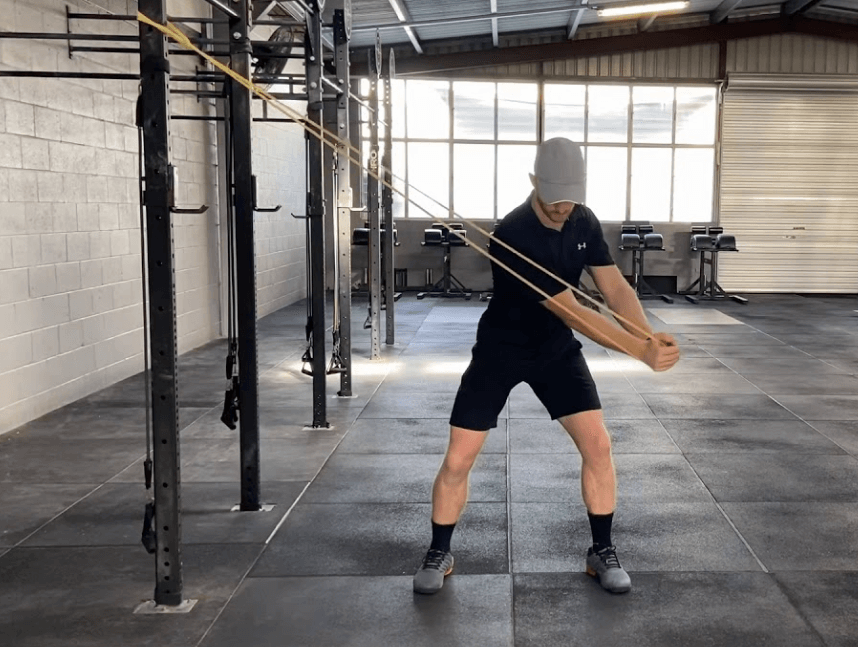
Step 1 - Set up a cable machine with the pulley at shoulder height. Attach a rope attachment to it and stand with your side to the machine, facing away from it.
Step 2 - Grab the rope with both hands and bring it over your shoulder.
Step 3 - Step away from the machine to create tension in the cable.
Step 4 - Rotate your torso towards the machine and explosively pull the rope down, chopping it across your body.
Step 5 - Keep your abs pulled in and make sure you pivot on your foot as you chop. This will ensure that you get a good rotational movement.
Step 6 - Repeat on the other side.
Pro Tip - Make sure you keep your shoulder blades down and retracted throughout the entire exercise. This will help you generate more power as you chop.
Muscles worked with High to Low Cable Wood Chops
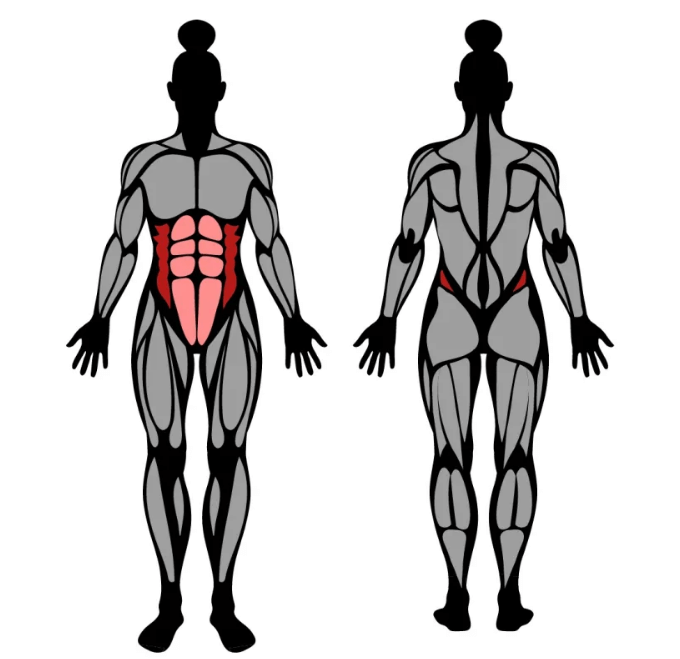
Wood chops in any form are a great way to work your obliques while also getting a bit of a shoulder and lats workout. This particular variation will focus more on the obliques since you're pulling the cable from a high to low position.
Here's a look at the muscles it targets:
Obliques
Cable wood chops can help isolate and work your obliques more than other ab exercises. The fact that it involves weight makes it even more challenging. Make sure you keep your abs pulled in and don't let your hips sag as you move.
Lats
The lats are the muscles that run down the sides of your back. They're responsible for bringing your arms down from an overhead position. Working your lats can help improve your posture and also make everyday movements easier.
Rectus Abdominis
The rectus abdominis is the muscle that gives you a six-pack. This muscle runs from your sternum to your pelvis and helps you flex your torso. Not to mention that it plays a vital role in aesthetics.
Suggested Reps - Depending on the weight used, anywhere from 10-30 reps per set should be ideal. Do not try and move a lot of weight here. The total weight is not the criterion for success but rather the quality of the movement. Use a weight that you can control and focus on contracting the muscles hard.
The Most Effective Russian Twist Variation
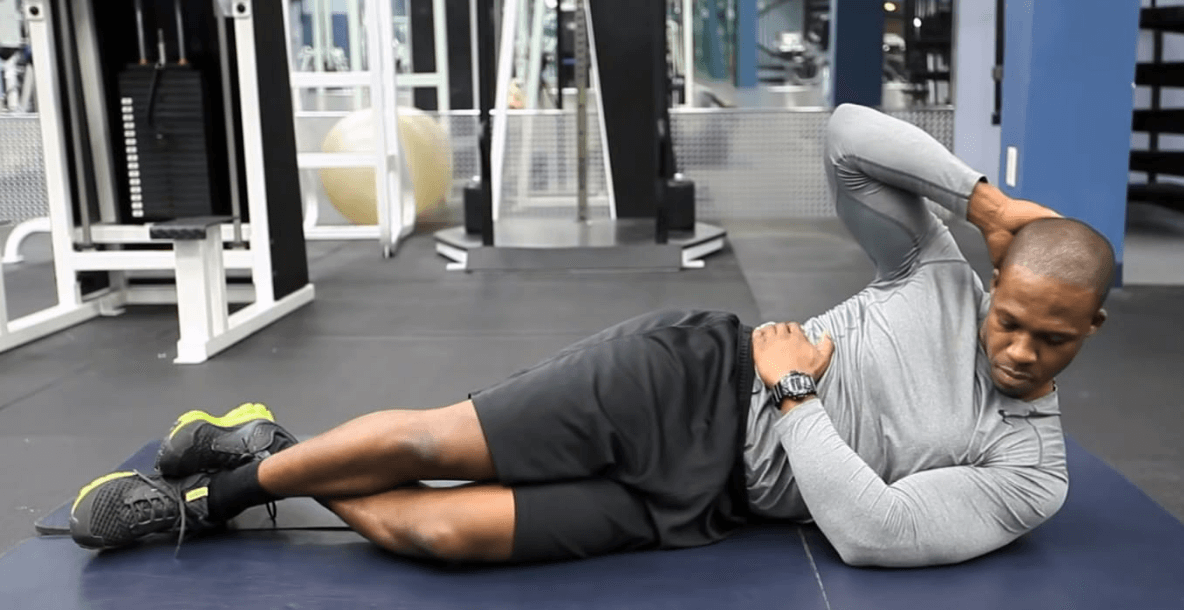
Some of these alternatives to the Russian Twist require a fair bit of mobility and flexibility to begin with. The Pilates Scissor for instance is a brutal move if you don't have the required mobility in your hips.
The variation below however is much easier to do and still very effective at targeting all the muscles in your core, including the obliques.
#1 - Oblique Crunches - Isolate the Oblique
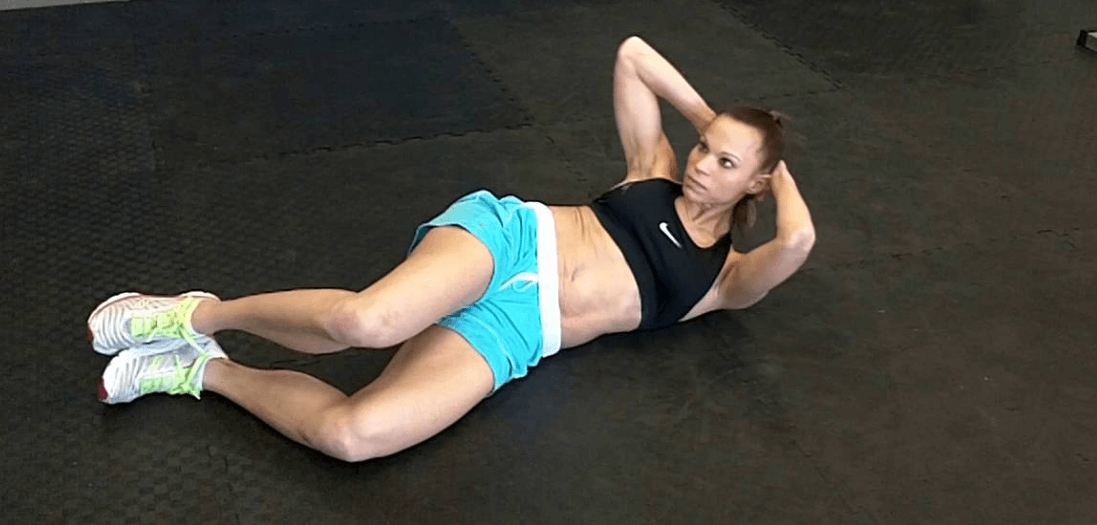
The Oblique Crunch is a great way to work your obliques without having to do a lot of twisting motions. It's a very effective move and one that you can do even if you don't have the best mobility to begin with. Besides, you can decide to do this variation or the standing oblique crunches depending on what feels best for you.
Bonus points for not requiring any specialized equipment either.
How to do Oblique Crunches
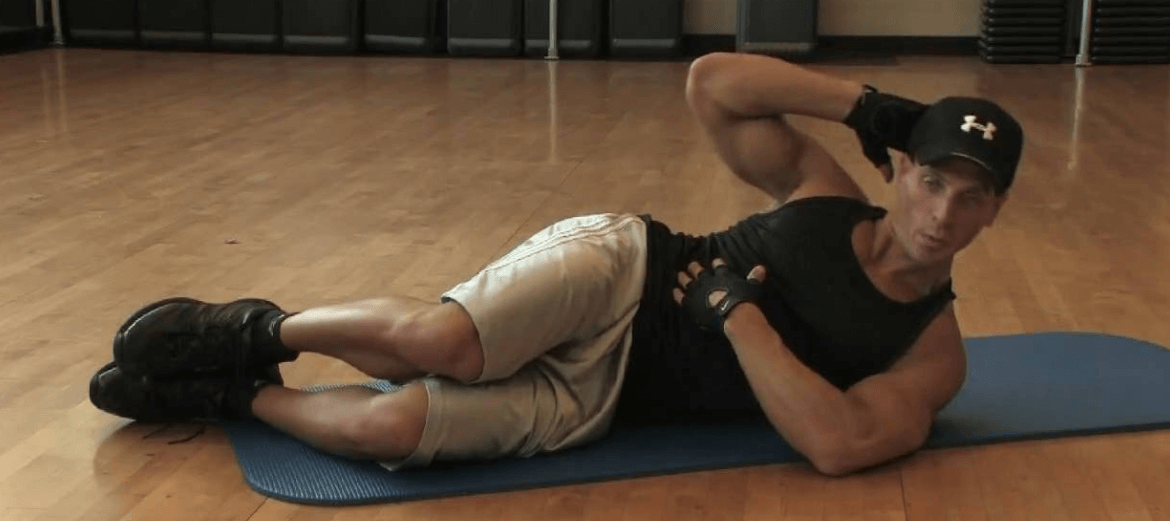
Step 1 - Lie on your left side with your knees bent and your feet together.
Step 2 - Place your right hand on your neck and the left one on the hip for support.
Step 3 - Crunch up, lifting your shoulder towards your hip using your abs for momentum.
Step 4 - Hold for a second and then lower yourself back down. That's one rep. Do at least 10-12 reps on this side.
Step 5 - Repeat on the other side.
Pro Tip - Do not swing your body as you crunch up. Go slowly and use your abs to lift your shoulder off the ground.
Muscles worked with the Oblique Crunch

The Oblique Crunch primarily targets your obliques. It's a great way to get them in shape and also help improve your overall core strength. But that does not mean that the other important muscles of the abdominals are left untouched. As you crunch up, you are going to brace that core and engage practically every muscle in the core.
Oblique
There are two types of oblique muscles - the external and internal ones. The Oblique Crunch primarily works the external obliques, which are responsible for the rotation and side-bending of the trunk.
Transverse Abdominis
The transverse abdominis is the deepest muscle of the abdominal group and it's responsible for compressing the gut. This muscle also helps in maintaining good posture and preventing injuries. Also, this is part of the Adonis Belt, also called the Apollo's belt, a V-shaped girdle of muscle that some guys have. If you want to develop the adonis belt, you need to target the Transverse abdominis.
Rectus Abdominis
The rectus abdominis is what most people refer to as the abs. This is the largest of the abdominal muscles and it's responsible for the all-important six-pack look.
Erector Spinae
The erector spinae is a group of muscles that run along your spine from your neck all the way down to your lower back. This muscle group is responsible for keeping your spine erect and also helps with functional movements.
Remember, you do not need to perform any fancy moves to get a worthy alternative for the Russian Twist. Even the simple Oblique Crunch can do wonders for your core. Give it a try and see for yourself.
FAQ
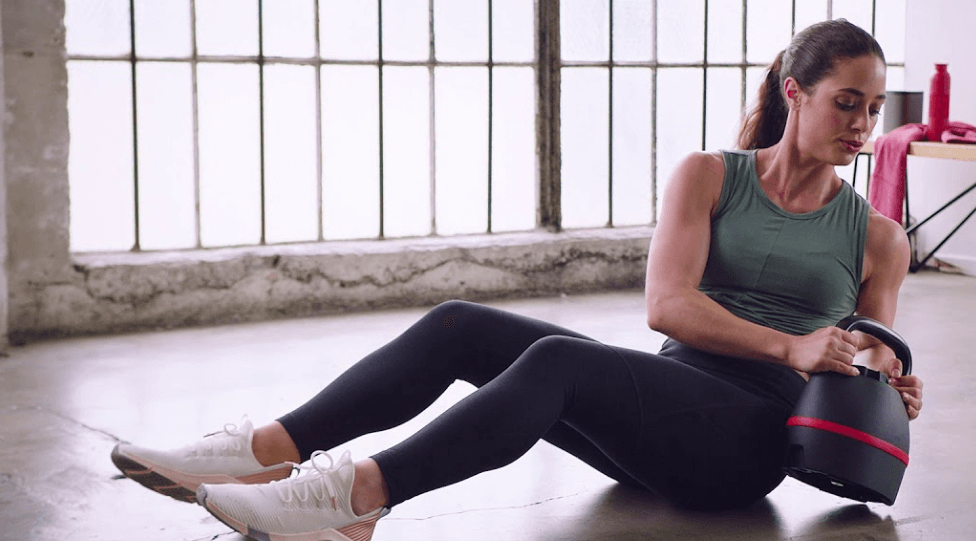
Still got some unanswered questions on the Russian twist alternatives? Here are some more details on these workouts.
Q. Is the Russian Twist bad for you?
A. Research shows that the Russian Twist can amplify the contraction and compressive forces on the spinal discs. This can lead to tissue damage and even long-term health problems if done excessively. So, if you have any back issues, it might be best to stay away from this move.
Q. What exercise can replace the Russian Twist exercise?
A. Any of the above-mentioned alternative exercises can replace the Russian Twist. They all work the same muscle groups and offer similar benefits. But if you are a beginner, we'd recommend starting with the oblique crunch.
Q. What can I do instead of Russian Twists?
A. We have listed four excellent exercises that can replace the Russian Twist. All of them work the core muscles differently and offer various benefits. But these aren't the only options you have, I have been getting similar benefits with other workouts like double crunches, roman chair sit-ups, and you can as well push the limits with something like 100 crunches a day, 500 crunches a day, or 300 sit-ups a day or so. There are many options to go for especially if you're targeting your core. Choose the one that suits your needs and abilities best.
Q. What is the easiest substitute for Russian Twist Exercise?
A. That would have to be the 'Seated Russian Twist', a variation where you sit on the ground with your knees bent, feet flat on the floor, and back straight. From here, twist your torso from side to side, making sure that your shoulders and hips stay in place. This is a great move for beginners as it's much easier to control than the standard Russian Twist. But if you want to avoid the Russian twist altogether, go for the oblique crunch.
Q. Why are Russian Twists so hard?
A. There are several reasons why the Russian Twist is a challenging exercise. First, it works the entire core, including some of the most difficult-to-train muscles like the transverse abdominis and erector spinae. Second, it requires good balance and coordination. And finally, it's a fairly demanding move that can quickly fatigue your abs and obliques.
So, how do you modify a russian twists to make it easier then? Well, you can get a tad creative with such variations like the half russian twist or the decline russian twist, which offer great benefits but without being too taxing.
Q. Is there any workout better than Russian Twists?
A. The Russian Twist may seem like the be-all, end-all workout, but that's simply not the case. Many other exercises can provide just as many benefits - if not more. So, don't be afraid to try something new.
Q. Are Russian Twists variations and modifications effective?
A. Oh yes, they are. There are a few different ways to perform the Russian Twist and each variation targets different muscles. For example, the seated Russian Twist is a great way to focus on the abs, while the standing Russian Twist is great for working your obliques. And if you want an even more challenging move, try adding a weight to your twist.
Q. Do Russian twists get rid of love handles?
A. Luckily for you who came looking for a workout that will help you get rid of love handles, the answer is a resounding yes! Russian twists are among the most effective workouts that you can use to get rid of love handles.
Q. What is the best Russian Twist replacement for beginners?
A. I often get asked, "How do you do a Russian twist for beginners?" My advise is, if you're just starting out, we recommend the oblique crunch. This exercise is relatively easy to perform and doesn't require any special equipment. Plus, it's a great way to work your abs and obliques without putting too much strain on your back.
Related Readings:
- Does Swimming Make You Taller? Or Is This Just a Myth?
- Creatine for Women – Should Girls Use It? Sports & Performance Benefits Explained
- 8 Best Peloton Alternatives – Budget Friendly Substitutes Better Than Peloton
- How to Make Calves Smaller – Tips, Techniques, & Things to Avoid
- My In-Depth Rogue Echo Bike Review – After 2 Years of Ownership
- Best Reverse Hyperextension Machines – Reviewed & Rated
Resources:
Ben Mayz
Hi there! I'm Ben, main author and chief editor at Fitlifefanatics.com. I have been obsessed with Strength Training and Fitness for 18 years now.
My passion for living a happy fit lifestyle is what made me realize that fitness is what I wanted for my future.
I went on to earn my Masters in Sports Training & Biomechanics.
My passion for Strength training & fitness and my love of helping others is what made me start Fitlifefanatics.
Here, myself, and a team of specialist aim to provide the most accurate, and actionable information possible in hopes to help foster the fitness community forward.
You can learn more about Fitlifefanatics on our About Page
